Political Fallout Is Biggest Risk For Market After 'Botched' UK Budget
“Markets have had to catch up pretty quickly”
The astonishing early reveal of the UK budget’s main measures is causing chaos, with volatile moves in bonds and the pound...
Rachel Reeves’ Budget raises taxes by £26bn, taking the burden to an all-time high of 38 per cent of GDP by the end of the parliament, according to an accidentally released forecast by the Office for Budget Responsibility.
The OBR’s assessment of Reeves’ Budget was published amid chaotic scenes before noon on Wednesday, around 45 minutes before the chancellor delivered her crucial second Budget.
It revealed that Reeves will freeze all personal income tax thresholds until 2030-31, in a move that is expected to raise £8.3bn a year and is the biggest tax-raising measure.
The second-biggest tax measure is a raid on salary sacrifice pension contributions, which will raise an additional £4.7bn. Among the other measures mentioned are charges on electric cars raising £1.4bn, gambling duty reform to bring in £1.1bn, and a council tax surcharge on homes worth more than £2mn, which will raise £400mn in 2029-2030.
Eir Nolsøe summarizes the headlines thus:
-
Personal tax thresholds will be frozen until end of decade, raising £8 billion. This will pull 780,000 more people into paying the basic rate of income tax and create 920,000 more higher-rate tax payers.
-
National Insurance on salary-sacrificed pension contributions will bolster the public coffers by £4.7 billion.
-
Increasing tax rates on dividends, property and savings income by two percentage points, raising £2.1 billion.
-
A new mileage-based charge on electric and plug-in hybrid cars from April 2028, at around half the fuel duty paid by petrol drivers. This will raise £1.4 billion.
-
A reduction in writing down allowances in corporation tax that will cost firms £1.5 billion. These allowances allow big companies to deduct a percentage of the value of certain items from their profits each year.
-
An overhaul of gambling taxes that will bring in £1.1 billion while changes to capital gains tax reliefs on employee ownership trusts raising £0.9 billion.
-
The trailed ‘mansion tax’ will hit owners of properties over £2 million from April 2028. It will be implemented as a council tax surcharge and raise £0.4 billion a year by the end of the decade.
-
Borrowing to fall from 4.5% of GDP in 2025-26 to 1.9% by 2030-31.
-
Meanwhile, debt as a share of GDP will end the decade at 96% of GDP, up from 95% this year. This is two percentage points higher than anticipated in March and twice the debt level of the average rich country, according to the OBR.
-
The fiscal watchdog predicts growth will be 1.5% on average a year until the end of the decade, a downgrade of 0.3 percentage points from March. The OBR blamed this on a weaker outlook for productivity gains.
-
Welfare U-turns and ending the two-child benefit are poised to cost the taxpayer £9 billion a year by the end of the decade.
Who are the winners and losers of today’s budget?
Let’s start with the winners:
-
Lower-income families with children, thanks to the chancellor’s decision to scrap the two-child benefit cap
-
Pensioners and low-paid workers also benefit from higher minimum wage rates and state pensions, while all households will enjoy cheaper energy bills
-
And let’s not forget the bond market which been positively (so far) surprised by a bigger-than-expected £22 billion buffer
-
High street retailers thanks to changes to the business rates regime
-
Investment companies owing to the changes being made to ISA to encourage more investment in stocks
The losers list is much longer, and broader. A few include:
-
Millions will be dragged into paying higher rates of income tax
-
Owners of more expensive properties facing higher levies, which has hit shares in some homebuilders
-
Bank of England policymakers are now expected to reach their inflation target a year later than previous forecasts
-
Overall, real household disposable income growth is projected to vanish over the next years
-
Online gambling companies which will face significantly higher duties
As the most unpopular UK Chancellor ever...
Reeves defended her choices, saying there would almost be £22 billion of headroom in the public finances as a result of her Budget.
I said there would be no return to austerity, and I meant it. This Budget will maintain our investment in our economy and our National Health Service. I said I would cut the cost of living, and I meant it: this Budget will bring down inflation and provide immediate relief for families. I said that I would cut debt and borrowing, and I meant it: because of this Budget, borrowing will fall as a share of GDP in every year of the forecast.
Our net financial debt will be lower by the end of the forecast than it is today and I will more than double the headroom against our stability rule to £21.7 billion – meeting our stability rule and meeting it a year early.
These are my choices. Not austerity. Not reckless borrowing. Not turning a blind eye to unfairness. My choice is a Budget for fair taxes, strong public services, and a stable economy. That is the Labour choice.
However, there’s concern among cyber security experts as to how the OBR leak today happened too.
“It’s truly astonishing that such a market sensitive document could find its way online via official channels in advance of the Chancellor’s speech,” Kenny MacAulay, CEO of accounting software platform Acting Office said by email.
“Basic compliance requirements should be in place to prevent this from happening, and a complete review is required about how and why such a major breach would take place.”
James Baxter Derrington says the Budget “has broken the deal the Labour Party made with the nation and breached its manifesto”.
The extension of the income tax threshold freeze – Rishi Sunak’s invidious invention – is a direct increase in the taxes that working people pay, to the tune of more than £8 billion. Every penny of this will be swallowed up, not by improved public services for us all but by increased benefits payments to a select few. In fact, it will barely cover half of that cost.
For a Chancellor so dedicated to targeting those with the “broadest shoulders”, she has picked one of the most regressive taxes possible. This stealth tax will not target the wealthiest but disproportionately affect those working desperately hard on lower salaries. A party founded on the principle of supporting the working man has just betrayed him.
Continuing in the spirit of prioritising state reliance over rewarding work, Reeves has slashed the amount employees can put into their pensions via salary sacrifice schemes. Don’t worry about funding your own retirement through prudent saving, this government is keen to create a generation of pensioners reliant on the state.
The Telegraph highlights that Reeves has now raised taxes by £70 billion across her two Budgets, more than seven times the £8.5 billion mentioned in the manifesto. Meanwhile the national debt will rise to £3.5 trillion by 2031, more than double the £1.6 trillion before the pandemic (on the measure of public sector net debt excluding the Bank of England, the metric used under the Conservatives) as Rachel Reeves’s borrowing mounts up.
But as Bloomberg strategist, Simon White notes, UK market spreads face the bigger risk from the potential political fallout if the budget lands badly, rather than from any major surprises in the announcement.
Never in recent memory has a UK budget had such grim anticipation, nor been so botched in its preparation.
A smorgasbord of leaks and U-turns has preceded what is expected to be a smorgasbord of tax rises and extra spending commitments.
Nevertheless, the market is not yet having a nervous breakdown. A combination of risk spreads and other UK markets, such as sterling, asset swap spreads and bond spreads, has widened recently, but is still well below where it was at the time of Reeves’ first full budget in October 2024.
The market is giving a cautious pass to Reeves’ tax-raising plans (which have been mostly leaked over the last 24 hours), but it’s an uneasy truce. It’s not inconceivable, as also discussed by my colleagues earlier, that pressure will mount on Reeves to quit if her party’s backbenchers don’t like her policies, or it lands especially badly with the electorate.
Unless the narrative shifts away from soaking working people and savers to inflate an already bloated benefits bill, the blowback may be considerable.
If Reeves comes under risk, the Prime Minister would be in the firing line too. There is talk of a “coronation” for Health Secretary Wes Streeting after the local elections in May. Markets discount to the present, and so does politics. Pressure might grow for a change of leadership much sooner.
Streeting would not be expected to be as fiscally loose as some other leadership candidates, but he is an untested quantity. Nor do we know who his Chancellor would be. What we do know is that a typical Labour MP did not get elected to save money.
Markets abhor uncertainty as well as spendthrift politicians. Risk spreads will widen much more sharply if Reeves plays a poor hand badly today.
Andrew Griffith, shadow business secretary, said:
“This Budget process has been a fiasco from start to finish and the unprecedented leak of the OBR’s report is just the final embarrassment.”
Tyler Durden Wed, 11/26/2025 - 08:26
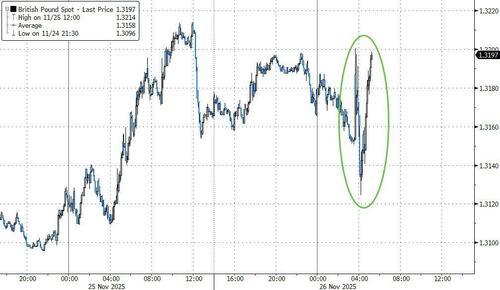
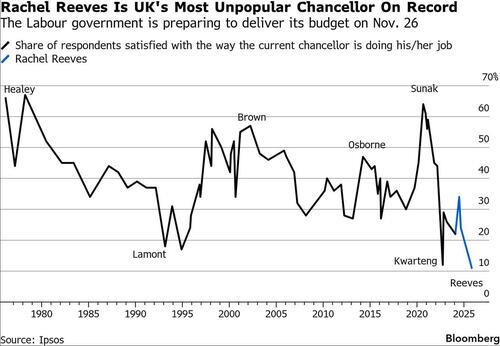

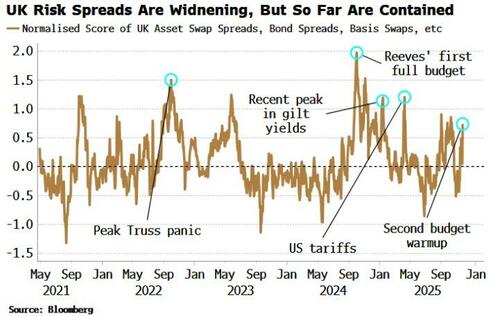
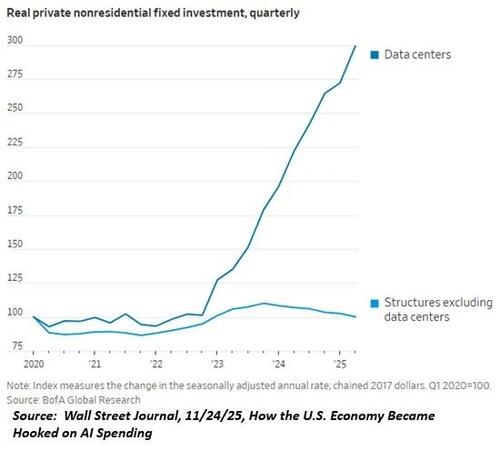
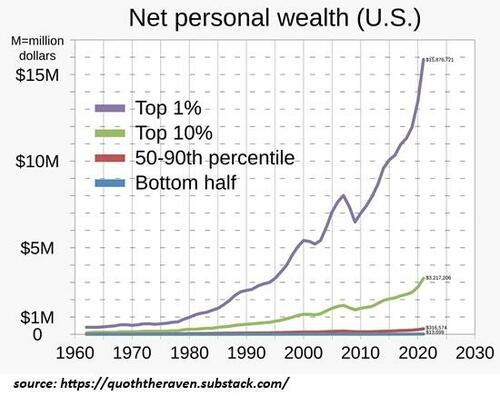


 Zephyr_p/shutterstock
Zephyr_p/shutterstock
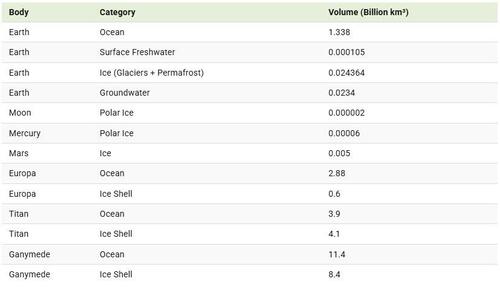



 Scene from "Project X"
Scene from "Project X" Stephanie Arnett/MIT Technology Review | Adobe Stock
Stephanie Arnett/MIT Technology Review | Adobe Stock


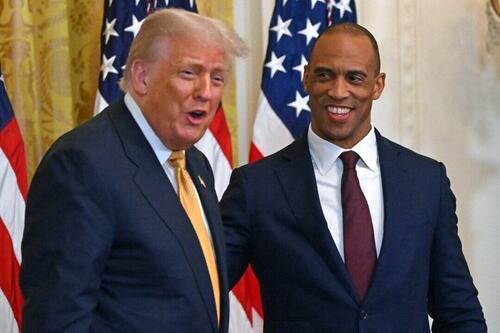





 Power supply units for mining rigs made by Bitmain Technologies Ltd.
Power supply units for mining rigs made by Bitmain Technologies Ltd. Eric Trump, co-founder and chief strategy officer of American Bitcoin, center, at the Nasdaq MarketSite in September.Photographer: Victor J. Blue/Bloomberg
Eric Trump, co-founder and chief strategy officer of American Bitcoin, center, at the Nasdaq MarketSite in September.Photographer: Victor J. Blue/Bloomberg
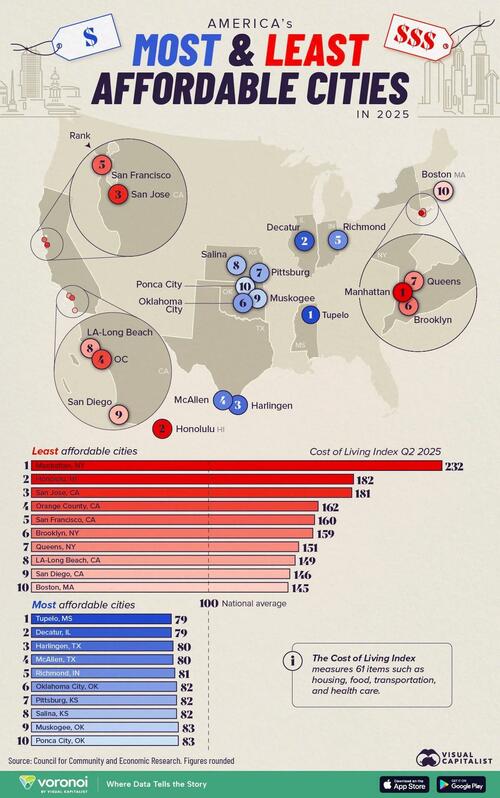

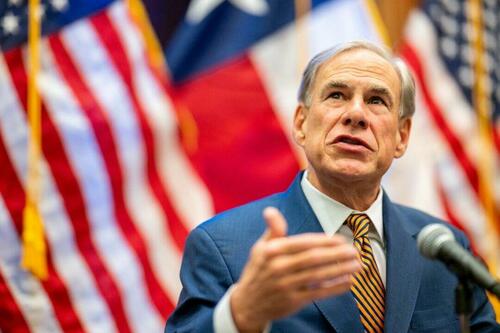 Gov. Greg Abbott speaks during a news conference in Austin, Texas, on Aug. 15, 2025. Brandon Bell/Getty Images
Gov. Greg Abbott speaks during a news conference in Austin, Texas, on Aug. 15, 2025. Brandon Bell/Getty Images
Recent comments